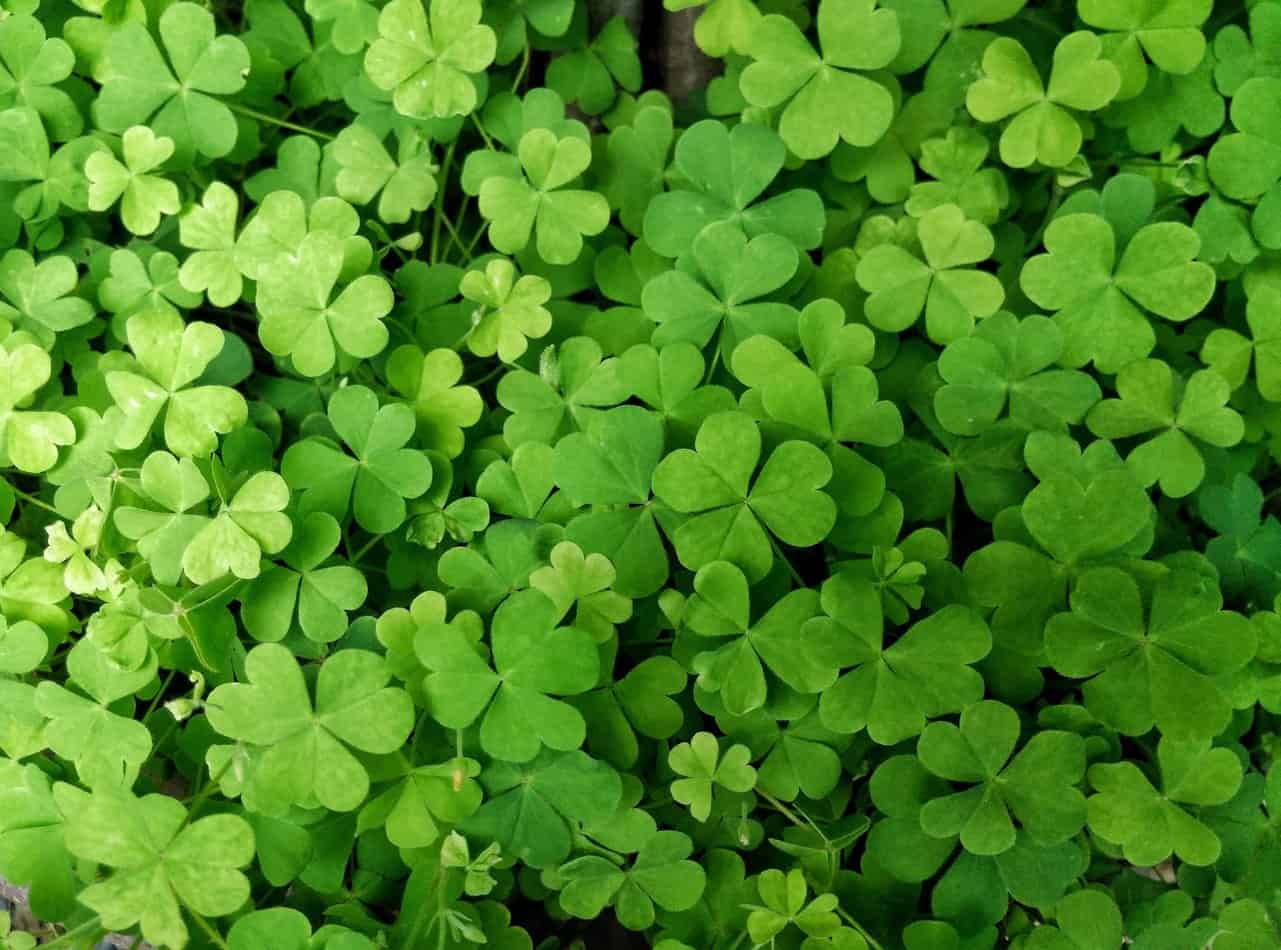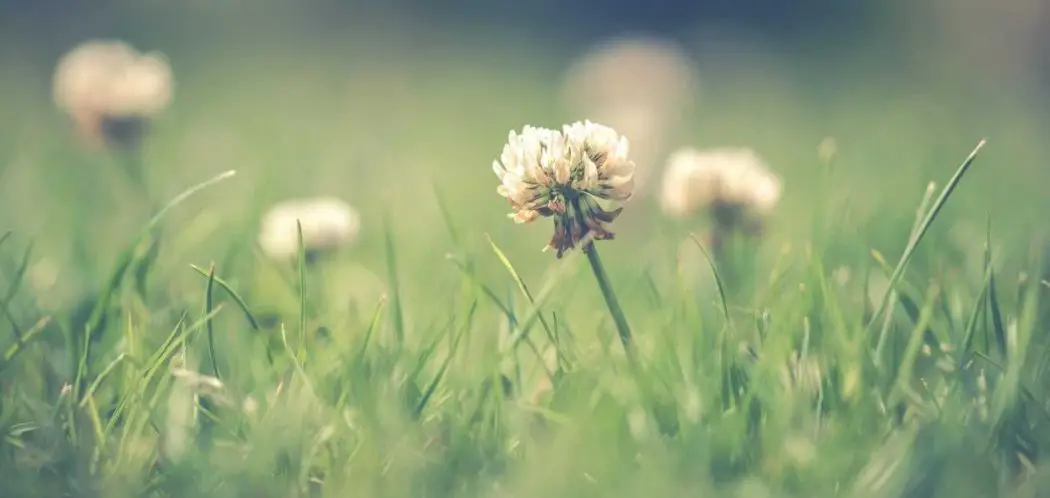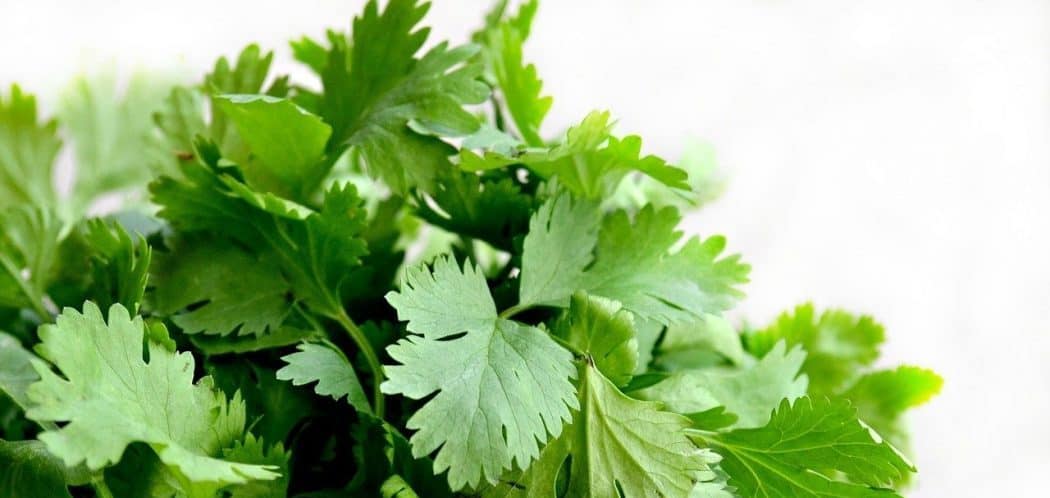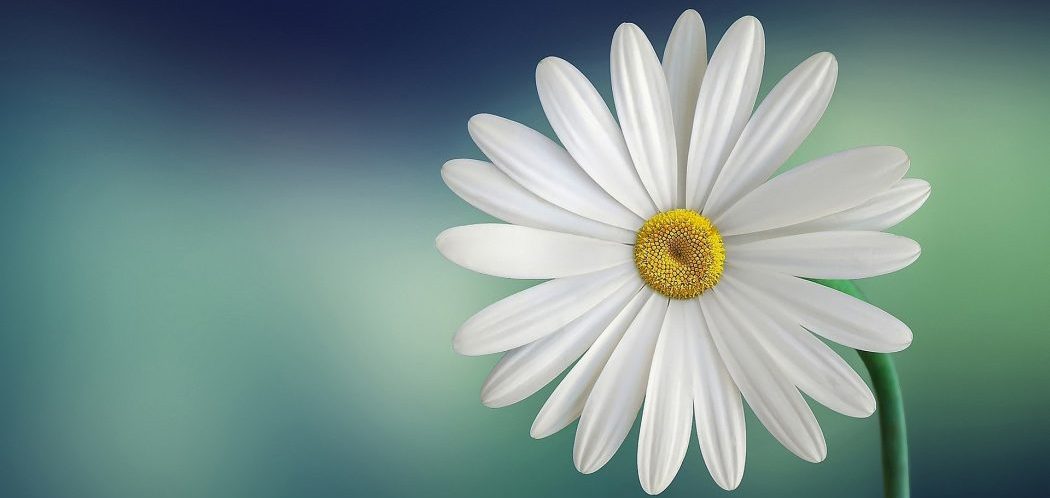Hey there, fellow green thumbs! As a gardening enthusiast, I’ve come across my fair share of pesky weeds. But have you ever stumbled upon weeds that resemble the beloved clover plant? I’m talking about those botanical impostors that can throw off even the most experienced gardener.
Identifying and distinguishing between clover and clover-like weeds is crucial for maintaining the health and aesthetics of your lawn or garden. And while it may seem like a daunting task, fear not!
In this blog post, we’ll dive into the key features and characteristics of clover and common weeds that look like clover. We’ll also explore how to properly identify and control these pesky invaders.
So grab your gardening gloves and let’s get started!
Weeds that look like clover include several species such as Black Medic, Hop Clover, Bird’s Foot, Sweet Clover, Bur Clover, Lespedeza, and Oxalis. These plants have similar leaf shape, flower color, and growth habit to clover, making it challenging to distinguish them. Knowing the key features to look for can help you accurately identify them and prevent their spread in your lawn or garden.
Importance of Identifying and Distinguishing Between Weeds
So why is it so important to identify and distinguish these clover-like weeds from the real deal? Well, my fellow plant lovers, the answer is simple – these weeds can cause significant damage to your lawn or garden.
Lawn weeds can compete with other plants for nutrients, water, and sunlight, which can stunt their growth or even kill them. In addition, some clover-like weeds are more aggressive than clover, meaning they can spread rapidly and take over your lawn or garden. This can result in an unsightly and unhealthy landscape.
Let’s be real… none of us want to spend hours on end tending to our plants, only to have them overtaken by pesky impostors. So, it’s important to identify and control these weeds before they cause any harm.
A Quick Look at Clover
Before we look at those weeds that closely resemble clover, let’s look at the features of clover itself taht allow us to identify it correctly.
Leaves
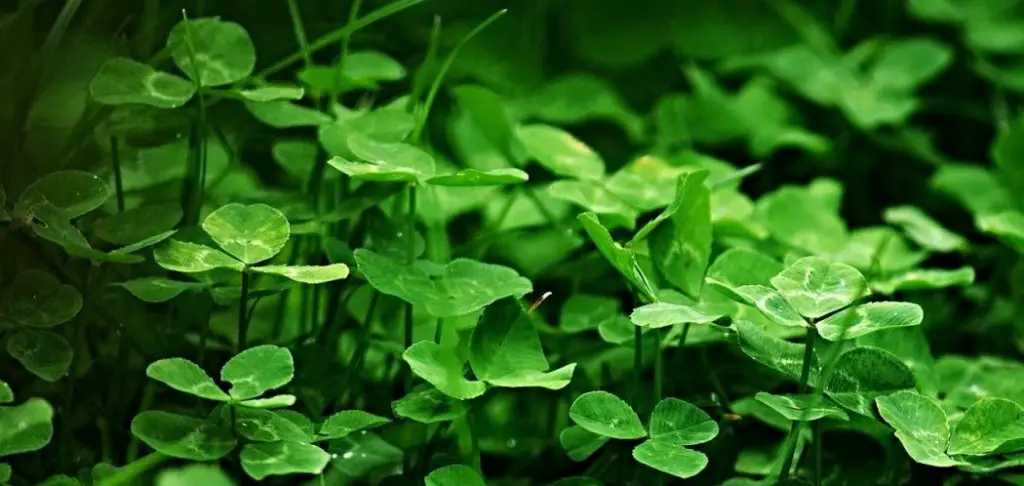
One of the most important things to keep in mind is to look for the distinctive trifoliate leaves that are characteristic of clover. These leaves are made up of three leaflets that are oval or egg-shaped, and have a somewhat rounded tip. The leaflets are also somewhat toothed along the edges, giving them a slightly jagged appearance.
Flowers
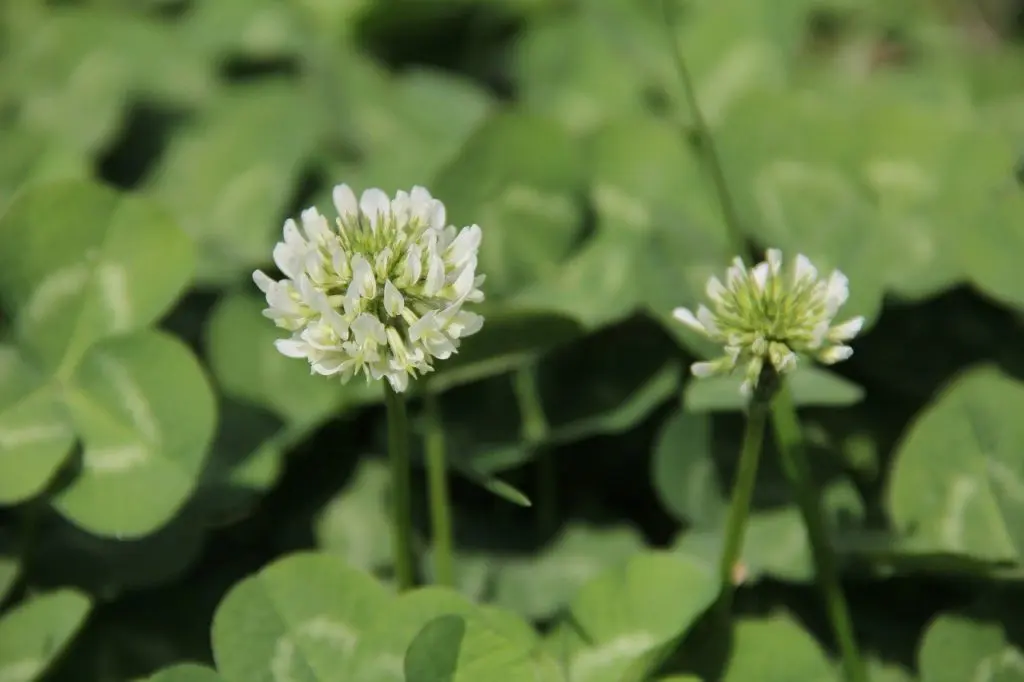
Another feature to look out for is the flowers. Clover typically has small, clustered flowers that come in shades of pink or white. These flowers are usually about the size of a pencil eraser and have a distinctive shape that can help you identify them. Keep in mind that not all clover plants will flower at the same time, so it’s important to look for other identifying features as well.
Growth Habit
In addition to these visual cues, you can also pay attention to the growth habit of the plant. Clover tends to form dense patches on the ground and grows in a low, spreading pattern. It also has a relatively short stature, typically only growing to a few inches in height.
Weeds That Look Like Clover
When it comes to weeds that look like clover, there are several common culprits that can be tricky to differentiate from the real deal.
One of the most notable is black medic, which features leaves that are similar in shape and size to clover, but with tiny yellow flowers instead of the classic white or pink blooms. Another lookalike is yellow woodsorrel, also known as oxalis, which has clover-like leaves but with distinctive yellow flowers that resemble miniature daffodils. And then there’s hop clover, which looks almost identical to regular clover at first glance, but with slightly more elongated leaves and smaller flowers that range from white to pale pink.
Other impostors to watch out for include bird’s foot trefoil, sweet clover, and bur clover.
Common Features of Weeds That Look Like Clover
You’ll notice that all the weeds mentioned here have a few features in common. These are:
- Trifoliate leaves – Each leaf is divided into three leaflets
- Small compact flowers – These are typically smaller than an inch in size
- Tends to thrive in disturbed soils – You may see them growing in fields, pastures, and along roadsides.
It’s ultimately the unique features such as the flower shape or color that allows us to distinguish these weeds from one other.
Black Medic: A Closer Look

Black medic is a common weed that is a member of the legume family. You’re most likely to notice the small yellow flowers popping up during the summer months. Its proper name is “Medicago lupulina” although its sometime called yellow trefoil and black clover too.
This plant has compound leaves with three leaflets that are shaped like wedges. The leaflets are serrated along the edges and have a kind of oblong shape. Black medic also has these little yellow flowers that are arranged in clusters on long stalks. They kind of look like miniature yellow pom-poms.
How to tell the difference between clover and black medic?
- Clover leaves are compound with three leaflets.
- The leaflets of clover are more rounded than black medic’s leaflets.
- Clover leaflets don’t have serrated edges like black medic’s leaflets.
- Clover flowers are typically pink or white.
- The flowers of clover have a distinctive round shape like a ball or globe.
Eliminating black medic from you lawn
If you do have black medic in your grass, it might be an indication that you’re mowing too short or your grass is not healthy enough to choke it out. Make sure you’re fertilizing your lawn too. A broadleaf herbicide like Southern Ag Amine 2,4-D will work well on black medic when the plant is actively growing.
Oxails
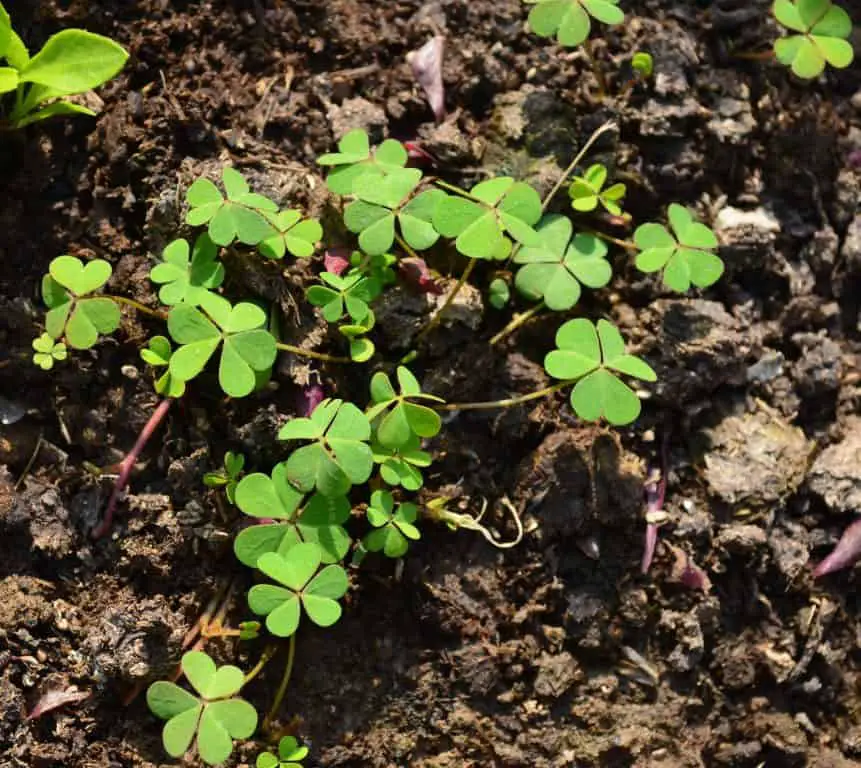
A common weed that you might see in your lawn is common yellow woodsorrel/oxalis. It’s an annual weed that often shows up in the cooler months. This plant goes dormant during the summer months but it will pop back up again in the fall.
I’ve found that oxalis tends to stand up initially and then it will lean over as it grows taller.
You tend to see oxalis in areas of the lawn where the grass it cut too low or where there is drought stress. These conditions make it so that your grass can’t compete very well.
How to tell the difference between clover and oxalis?
- Oxalis has trifoliate leaves that are more rounded and heart-shaped than clover.
- The flowers of oxalis are typically yellow or pink and have a unique folding structure.
- The stem of oxalis is usually thin and wiry, and the plant can have a droopy appearance.
- Clover also has trifoliate leaves, but they are more rounded than those of oxalis.
- The flowers of clover are pink or white and have a characteristic round shape.
- The stem of clover is usually thicker and more robust than that of oxalis.
Eliminating oxalis from you lawn
Trying to hand pull oxalis will not be effective because it always ends up coming back. Oxalis actually has a bulb that sits several inches underneath the ground. Bulb generated weeds are generally quite hard to remove from your lawn because although the plant may come up, the bulb will still remain.
To get rid of oxalis, I like to spot spray using selective herbicides that kill the weed but not your lawn. A general broadleaf herbicide like Southern Ag Amine 2,4-D (link to Amazon) should get the job done.
It’s good to tackle this weed earlier rather than later. Leaving oxalis will allow it to spread and overcrowd your lawn.
Lespedeza
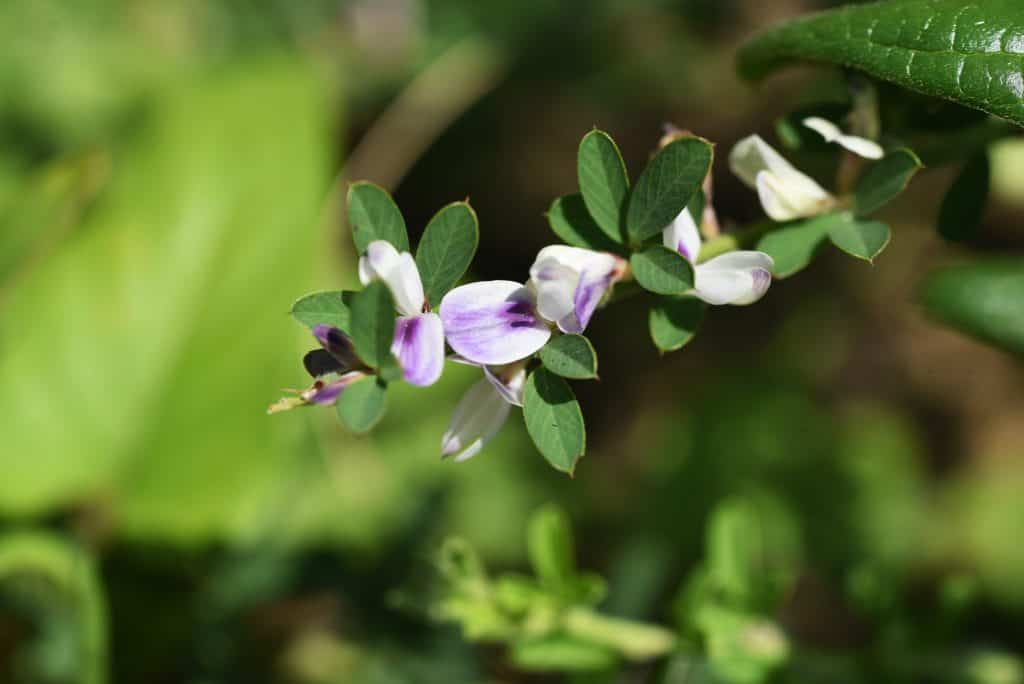
Lespedeza is a prostrate summer annual, often referred to Japanese clover. It tends to show up in the summertime and you’ll see it in all different grass types, especially centipede grass.
It has wiry stems and small groups of three leaves that are oblong and have parallel veins. It will also shoot out a pink/purple coloured flower and it matures late in the season.
It looks similar to spurge although it has a woodier stem to it.
How to tell the difference between clover and lespedeza?
- Lespedeza has compound leaves with three longer and more narrow leaflets compared to clover.
- Lespedeza flowers are pink or purple and are arranged in spikes on the stem, giving the plant a wispy and delicate appearance.
- Clover also has compound leaves with three leaflets, but they’re usually more rounded than those of lespedeza.
- Clover flowers are usually pink or white and have a characteristic shape that looks like a little ball or globe.
- Clover flowers are usually arranged in clusters, while lespedeza has spikes of flowers that grow up from the stem.
- Lespedeza has a more delicate and wispy look, while clover is usually a bit more robust in appearance.
In summary, lespedeza has long, narrow leaflets, pink or purple flowers arranged in spikes, and a delicate appearance, while clover has more rounded leaflets, pink or white ball-shaped flowers, and a more robust appearance.
Eliminating lespedeza from you lawn
This weed grows very low to the ground and once the weed is up, you’ll have to use a post-emergent herbicide to get rid of it. The best prevention is to maintain a quality, thick and healthy lawn.
A broadleaf herbicide like Southern Ag Amine 2,4-D will work well on lespedeza.
Other Clover Imposters
Sweet Clover
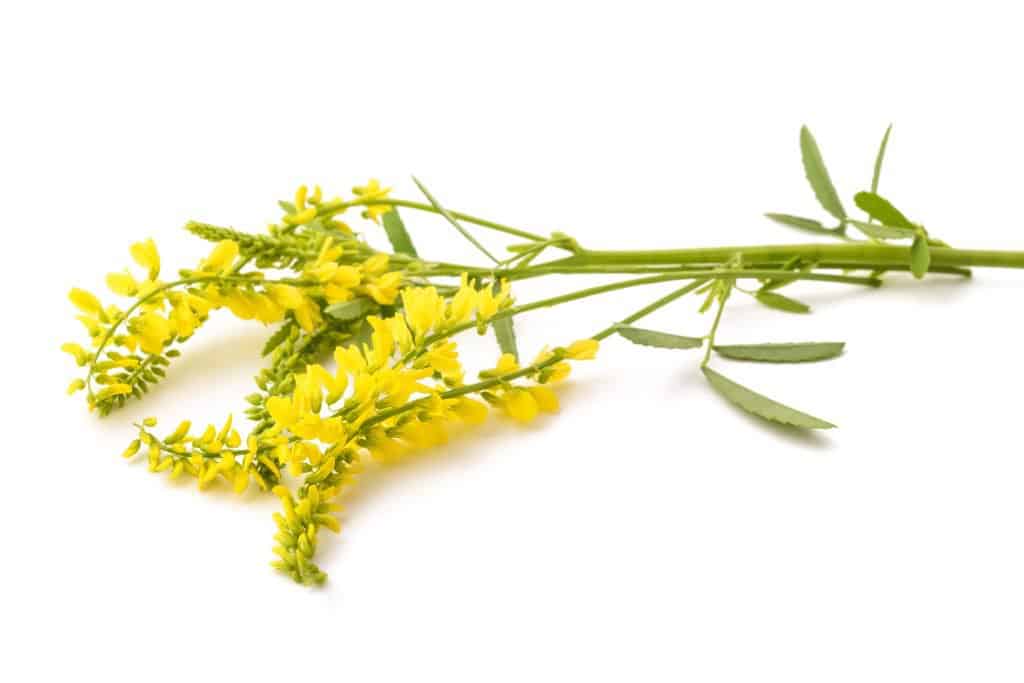
Sweet clover is a herbaceous plant that can grow up to 6 feet tall. It has small, fragrant, white or yellow flowers that grow in clusters on the ends of its stems. The leaves of sweet clover are compound, with three small, oval-shaped leaflets that are slightly toothed along the edges. The stems are tall and sturdy, with a woody texture and a greenish-brown color.
When crushed, sweet clover leaves have a distinctive sweet smell that is reminiscent of vanilla or freshly cut hay. It is often used as a cover crop, forage crop, and in herbal medicine.
How to tell the difference between sweet clover and clover?
- Sweet clover has trifoliate leaves, while clover usually has three leaflets but can sometimes have four.
- Sweet clover has yellow flowers, while clover can have a range of colors like white, pink, and red.
- Sometimes, sweet clover can have white flowers too.
- If you’re still unsure, crush the plant and take a whiff.
- Sweet clover has a distinct vanilla smell, while clover doesn’t really have much of a scent.
Bird’s Foot
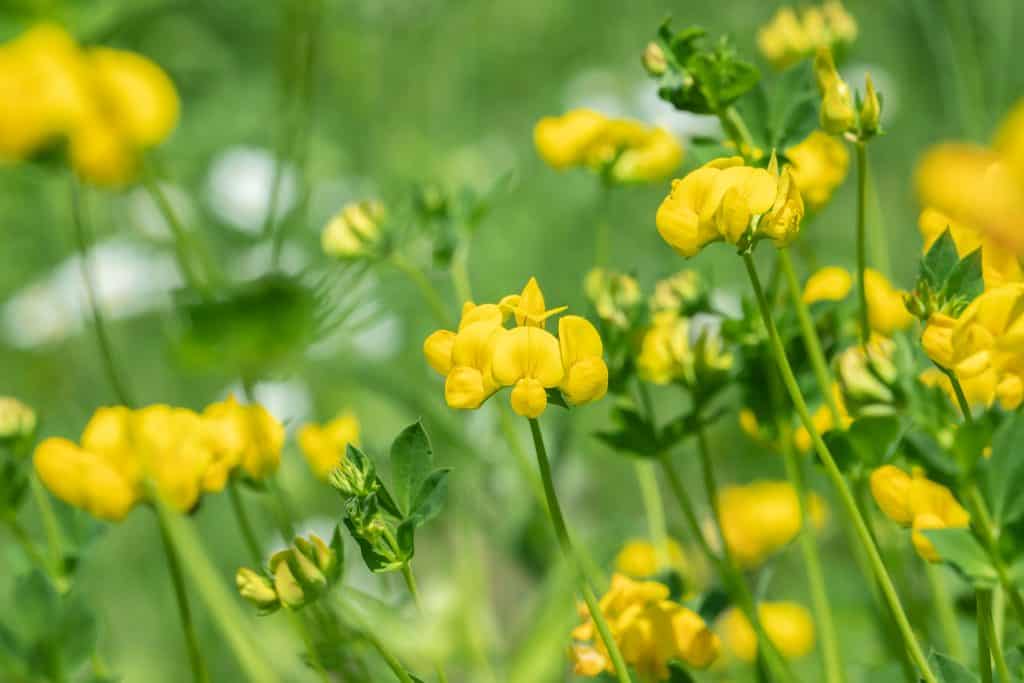
Bird’s foot, also known as birdfoot trefoil, is a clover-like weed with small yellow flowers that are clustered together at the end of the stem. The leaves are composed of three leaflets, which are narrow and oblong in shape, and can be either smooth or hairy.
The stem of bird’s foot is usually prostrate, meaning it grows along the ground, and can grow up to 2 feet in length. When mature, the plant produces small pods that resemble bird’s feet, hence the name.
Overall, bird’s foot can be easily mistaken for clover due to its similar appearance, but a closer look at the leaves, flowers, and stem can help distinguish between the two.
How to tell the difference between bird’s foot and clover?
- Bird’s foot has pinnate leaves with multiple leaflets on either side of a central stem.
- Clover usually has trifoliate leaves with three leaflets.
- Bird’s foot has clusters of small, yellow flowers that resemble a bird’s foot.
- Clover can have a range of colors like white, pink, and red.
- There is a type of clover called “bird’s foot clover” that can have flowers that look similar to bird’s foot.
- If you’re still unsure, crush the plant and smell it.
- Bird’s foot has a bit of a bitter smell, while clover doesn’t really have much of a scent.
Hop Clover
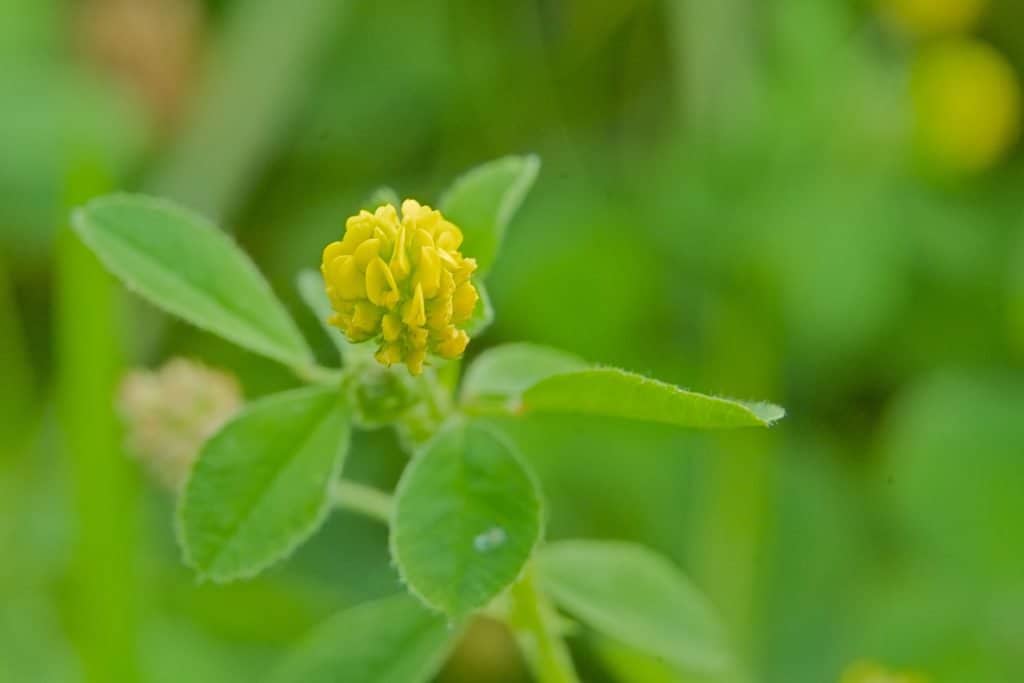
Hop clover, also known as yellow clover, is a type of clover-like weed that can easily be mistaken for white clover. However, unlike white clover, hop clover has yellow flowers that bloom in the summer. The leaves of hop clover are typically divided into three leaflets and are smaller and more pointed than those of white clover. Additionally, hop clover tends to have a more upright growth habit than white clover.
Hop clover is a smaller and less common clover-like weed compared to others, but it’s still important to accurately identify it to effectively manage it in your lawn or garden.
How to tell the difference between hop clover and clover?
- Hop clover has pinnate leaves, while regular clover usually has trifoliate leaves.
- Hop clover has clusters of small, yellow flowers that resemble hops, while clover can have a range of colors.
- Hop clover can look similar to bird’s foot clover, so giving the plant a little crush and taking a sniff can help differentiate them.
- Hop clover has a sour smell, while clover doesn’t really have much of a scent.
Identifying and Controlling Clover-like Weeds: Tips and Strategies
The most common misidentification of clover is yellow sorrel/oxalis. You can tell the two apart by looking at the leaves. Oxalis has more of a heart shaped leaf while clover has oval shaped leaves. Like clover, oxalis spreads really fast so you’ll want to deal with it before it starts to take over your lawn. It has a complex root system so treating it with a herbicide is your best option.
Your lawn can naturally choke out all the weeds mentioned in this article. The best method is prevention. Keeping your grass tall and thick and maintaining good crop canopy will limit resources that weeds need to grow. Properly fertilizing you lawn will be helpful too.
A good lawn care routine will prevent these weeds from popping up so you won’t have to keep using herbicide products.
Finally, pay attention to your grass type. If you have a less resilient grass type, it will be less likely to choke out any weed so you may want to consider a total renovation to kill off the grass and reseed with tougher types of grass if weeds become too big of a problem.
Here Are Some of My Favorite Lawn Care Products
Thanks a lot for making it to the end of this post! I hope you found it useful. Here are some lawn care products that I use and that I think you’ll also find helpful. These are affiliate links, so if you do decide to use any of them, I’ll earn a commission.
In all honesty, these are some of the basic products that I use and recommend to everyone.
Broadcast Spreader
This Scotts Elite dual rotary spreader is not a professional grade model but it’s excellent for homeowners. I really like the edge guard on it. It’s really easy to switch on and off so it’s great for going around my driveway and flower beds.
If you’re not looking to spend hundreds of dollars, I’d definitely recommend this model. It spreads out a wide path and is great quality for the cost.
Backpack Sprayer
This 4-Gallon sprayer is my absolute favorite. It sprays for a really long time. I’ve had this sprayer for quite a while and I’ve never had the battery run out. The adjustable pressure switch is a really import feature to me.
You can order a lot of accessories for this model but I’ve never really found much of a need for it.
Head Aerator
Hand aerators are great for small spots if you’ve got construction debris or a spot that constantly dries out. You can also fill these holes with organic matter that will hold a bit more moisture.
This one by Yard Butler is an absolute bargain. It pulls nice long cores. I also use it for taking soil samples around the yard!

